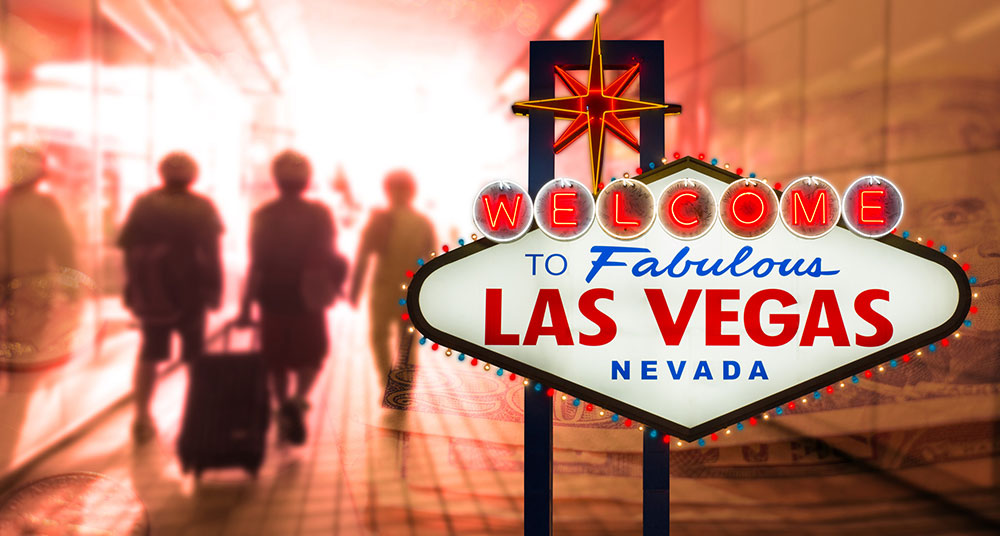Las Vegas, Nevada, known globally as a hub of entertainment and tourism, continues to solidify its status as one of the fastest-growing metropolitan areas in the United States. With its unique blend of economic opportunities, favorable tax policies, and a vibrant lifestyle, the city is attracting residents at an impressive pace. As of March 21, 2025, projections indicate that Las Vegas is poised for significant population growth by 2030, reshaping its standing among U.S. cities and driving development in specific sections and zip codes. This article explores the projected population for Las Vegas by 2030, its potential ranking among U.S. cities by size, and the sections of town and zip codes expected to see the most rapid growth.

Population Projection for 2030
The Las Vegas metropolitan area, encompassing the cities of Las Vegas, North Las Vegas, Henderson, and most of Clark County, has been on a steady upward trajectory. In 2025, the metro area population is estimated at approximately 3 million, reflecting a growth rate of about 1.59% from 2024. This momentum is expected to continue, fueled by a robust local economy, job creation in diverse sectors like technology and healthcare, and an influx of retirees and young professionals drawn to the region’s low cost of living and lack of state income tax.
Projections for 2030 vary slightly depending on the source, but a consensus points to the Las Vegas metro area reaching between 3.3 and 3.5 million residents. The University of Nevada, Las Vegas (UNLV) Center for Business and Economic Research (CBER) forecasts that Clark County alone could hit 2.5 million by 2031, suggesting the broader metro area could easily surpass 3.3 million by 2030. Some estimates, such as those from the National Multifamily Housing Council, suggest an even more ambitious figure, predicting the metro area could approach 4.3 million by 2030—a 39% increase from 2018 baseline figures. This growth would translate to an annual increase of roughly 1.5% to 2%, consistent with recent trends and supported by infrastructure investments like the high-speed rail project and new hotel developments.
For the city of Las Vegas itself (distinct from the metro area), the population in 2025 stands at approximately 670,352, growing at a rate of 0.71% annually. Assuming this rate holds steady, the city could reach around 710,000 by 2030. However, if migration and economic factors accelerate, as some analysts predict, the city proper could approach 750,000.
Ranking Among U.S. Cities by Size
As of 2020, the Las Vegas metropolitan area was the 24th largest in the United States, with a population of 2,227,053, according to the U.S. Census Bureau. By 2025, it remains in the top 30, likely around 29th, based on updated estimates of 3 million residents. However, the projected growth to 3.3–3.5 million by 2030 could elevate its ranking significantly.
Comparatively, metro areas like Dallas-Fort Worth (7.6 million in 2020), Miami (6.1 million), and Atlanta (6 million) currently outpace Las Vegas, but its rapid growth rate could close the gap with smaller metros. For instance, Riverside, California (4.6 million in 2020), and Orlando (2.7 million) are within reach if Las Vegas sustains its trajectory. By 2030, the Las Vegas metro area could climb into the top 20 U.S. metro areas, potentially overtaking cities like Pittsburgh (2.3 million in 2020) or Cleveland (2 million) and nearing the size of metros like Portland, Oregon (2.5 million). A stretch goal of 4.3 million could even place it in the top 15, challenging cities like San Antonio (2.6 million in 2020).
For the city proper, Las Vegas ranked 24th in 2020 with 641,903 residents. With a projected 710,000–750,000 by 2030, it could rise to the 20th–22nd spot, surpassing cities like Tucson (542,629 in 2020) or Fresno (542,107), assuming their growth rates remain slower.
Fastest-Growing Sections of Town
Las Vegas’s growth is not uniform across its sprawling valley. Several sections of the metro area are emerging as hotspots due to available land, new developments, and economic opportunities:
North Las Vegas: This city within the metro area is poised to be the fastest-growing section. Mayor John Lee has projected an increase of over 100,000 residents by 2030, driven by an influx of manufacturing and warehousing businesses. North Las Vegas benefits from ample undeveloped land in the northeast valley, making it a magnet for new housing and job growth. Areas near Apex Industrial Park are particularly primed for expansion.
Southwest Las Vegas Valley: The southwest, including parts of Enterprise and unincorporated Clark County, is another high-growth zone. With available land and proximity to the Las Vegas Strip, this area is seeing a boom in residential projects, particularly higher-density, mixed-use developments. Commissioners have noted significant activity here as the valley expands outward.
Henderson: Located southeast of Las Vegas, Henderson continues to grow as a family-friendly alternative with strong schools and master-planned communities like Inspirada and Green Valley. Its population is expected to swell as retirees and professionals settle in, supported by new commercial developments.
Downtown Las Vegas and Infill Areas: Within the city proper, revitalization efforts like the Downtown Project are driving growth through mixed-use projects that blend residential, commercial, and recreational spaces. This “infill” approach targets underused lots, appealing to urban dwellers seeking walkable communities.
Fastest-Growing Zip Codes
While precise zip code projections require detailed local data, trends and development plans highlight several areas likely to lead growth by 2030:
89031 (North Las Vegas): This zip code, covering much of North Las Vegas, is central to the city’s expansion. With new housing developments and proximity to job centers, it could see some of the highest population gains in the valley.
89166 (Northwest Las Vegas): Located near the developing northwest fringe, this area benefits from new residential projects and its position along the valley’s outward growth path.
89141 (Southwest/Enterprise): Encompassing the booming southwest, this zip code is a hotspot for modern housing and mixed-use developments, drawing younger families and professionals.
89052 (Henderson): A key part of Henderson’s growth, this zip code includes affluent neighborhoods and planned communities, attracting a mix of retirees and working households.
89101 (Downtown Las Vegas): With downtown revitalization, this zip code could see a surge in urban residents as high-density projects take root.
Key Takeaway
By 2030, Las Vegas is set to cement its reputation as a dynamic, growing metropolis. The metro area’s population could reach 3.3–3.5 million, potentially climbing into the top 20 U.S. metro areas, while the city proper may approach 750,000, inching up the city-size rankings. North Las Vegas, the southwest valley, Henderson, and downtown are leading the charge, with zip codes like 89031, 89166, 89141, 89052, and 89101 poised for the fastest growth. As Las Vegas balances outward expansion with upward development, its ability to innovate in housing, water management, and infrastructure will shape its future as a thriving urban center in the desert.

